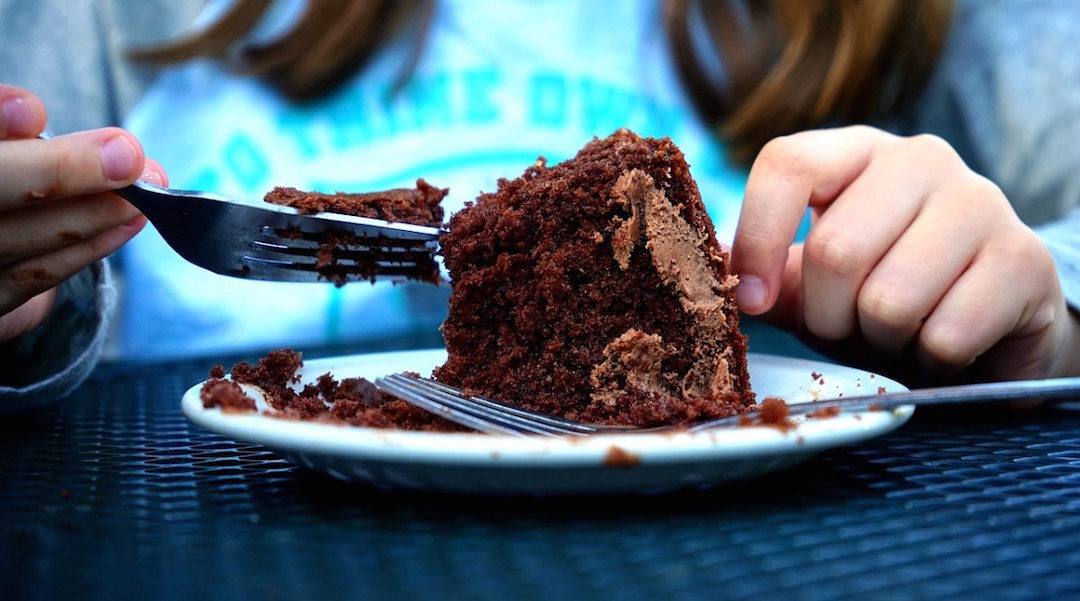What is it? Is this your pattern? If so, how can you make changes?
While I was in India this past January at the Panchakarma retreat (see my December newsletter), one of the surprising lessons I learned centered on food. At the clinic I was enrolled at, there were three meals served daily, all fresh and vegetarian with local herbs added for flavor and for their nutritional boost.

I was fed my three meals at exactly the same times every day. The meals were served in my room, a practice promoting the importance of having mealtime removed from any social influence. This encouraged eating mindfully—not over- or under-eating, but eating to fullness, leaving some of the food if I didn’t want or need it.
What I discovered was a new understanding of what “being hungry meant for me. By this I don’t mean to suggest that the meals weren’t filling, or flavorful, or that I was deprived in any way. But I began to realize that I often under estimated portion size and their impact on my hunger. I also learned that sometimes I eat “just because I can,” or “just because” the food is therein front of me … and I don’t think I am alone in this.
Which presents the topic of “emotional eating.” Is it actually is a thing? Read what the Mayo Clinic has to say:
“Emotional eating is eating as a way to suppress or soothe negative emotions, such as stress, anger, fear, boredom, sadness and loneliness. Major life events or, more commonly, the hassles of daily life can trigger negative emotions that lead to emotional eating and disrupt your weight-loss efforts.”

By this definition, are you wondering if you are an emotional eater? Have you ever noticed that you feel guilt or shame for eating a certain way or a certain food? Do your eating habits change depending on what’s happening in your life? In other words, do you always eat certain foods in response to certain situations?
If you are an emotional eater, you might want to stop or at least shift your eating patterns. Here are a few suggestions for making changes:
1.) Keep a food journal. The simple act of recording will slow down your impulses and create awareness around your choices, which is sometimes enough to shift food habits.
2.) Learn what real hunger means in your body. If your stomach is not growling, you are probably not hungry. If uncertain, give yourself a time limit to wait before you eat and take note of how it feels.
3.) If you can afford to treat yourself, go someplace where healthy food is made for you and served at certain times. Notice how you feel; you may be able to emulate this practice on your own.
4.) Be easy on yourself by trying out other ways to “sooth” yourself. A new class, yoga, cooking, knitting, a book club, gardening, or hiring a personal trainer all come to mind. It’s also important get a team to support you.
Denise’s 2 Cents:
Most of us probably “emotionally eat” to some degree. We all could benefit by shaking up our schedules and trying new ways of eating and new foods. The challenge depends on to what extent food is a major soothing technique, a way to have—or not have—your feelings. For some physiological reasons, fried food or foods with sugar are common comfort foods.
A real physical response takes place when you turn to certain foods to sooth. Knowing that fact should allow you some space for some compassion if you do identify as an “emotional eater.” Bottom line—It’s not your fault. These foods do actually change the chemistry of the brain and help create a “salve” to physically and emotionally calm or ground some of us. This kind of comforting may be hard to give up.
Sooo … the work comes by way of slow pattern shifts. I have found that after my clients make deliberate changes, they actually slowly begin to “crave” foods differently. Shifts in patters happen more naturally this way. Behavioral techniques and support play important roles with this. Check out this blog post for 10 apps to help with “emotional eating”:
http://www.solnutrition.com.au/blog/2016/01/top-10-mindful-eating-apps/
To get started: at the very least, write down what you eat, every day, no matter what it is. That simple habit can be quite revealing and make all the difference in your approach to eating.
